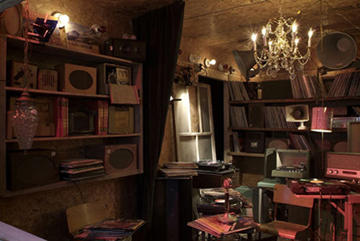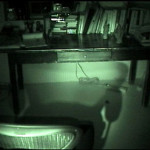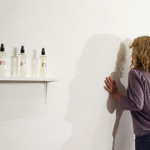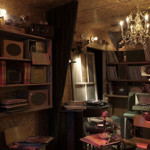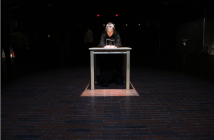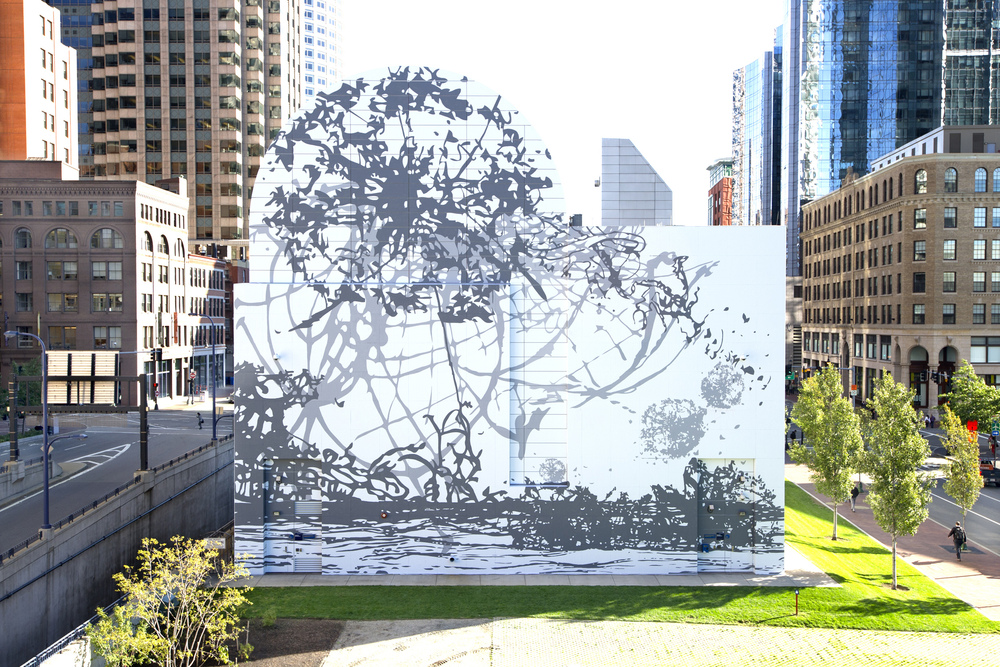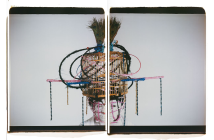The idea of humans having five senses comes from Aristotle, relating to his greater writings on perception, a condition he used to distinguish animals from plants. In the Aristotelian philosophy, an animal's lifetime is defined by its constant navigation through the world by means of perception, acting upon agents with the capacity to be affected on. Within this interaction, change is present, as stated by Aristotle: "the perceptive faculty is in potentiality such as the object of perception already is in actuality."
Recent determinations of the senses include the original five (sight, hearing, smell, taste, touch), but also others such as the sense of heat, of pain, of balance, and the kinesthetic sense of body awareness. One wonders if other senses can be added as well: the sense of association, the sense of memory, the sense of intimacy or disorientation. All these play a role in part one of the Sensorium exhibition at the M.I.T. List Visual Arts Center, on exhibit until the 31st of December.
Mathieu Briand's environment based on 2001: A Space Odyssey develops a physical space out of the experience of the movie. Replete with the Bauhaus-style furniture and bright white color scheme of 2001 and other 1970s retro futuristic cinematic architecture, Briand's piece provokes the quaint design idealism of a generation past. The setting is familiar to one form of emotional sense (memories of the movie) and this visual experience, having manifested in a physical realm, is oddly reassuring and sentimental.
Other elements of the piece are helmets made of yellow molded plastic (think of the original Macintosh) with video screens for each eye and a portable camera. Used with four participants, the helmets transmit information to each other in a form of sensory interaction, enabling the viewer to "see" a completely different image than what is in front of them. I admit that seeing others wearing the helmets made me desirous and impatient but actually having the helmets on was a gleeful childlike experience, and there was a button to press repeatedly.
Then there is main video piece of the show, Office Edit, by Bruce Nauman, by far the weakest work in the show. Exhibiting none of the technological frivolity of the pieces in the show, Nauman employs the simple green infrared of a video camera (the same technology used by Paris Hilton), focusing the camera on a table and chair in his studio for hours overnight. Nothing happens. In Nauman's generous revelation, maybe a mouse or two appears, taking pity (in a potentially cavalier way) on the stricken viewer.
A wonderful departure from Nauman is Ryoji Ikeda's Spectra II, comprised of a dark hallway for one person to enter at a time. The lack of light combined with a high pitched sound effect is bewildering at first then exhilarating. Suddenly a flash goes off and one's own shadow is seen for a split second. The deprivation of senses followed with the intense shock of the senses is startling and fantastic. Often my hands reached to the walls for guidance and with no external conversation to be had, I continued. At the end of the hallway lay a red neon strip, a bit anticlimactic, but then the journey back...
Of absolute brilliance is Opera for a Small Room by Janet Cardiff and George Bures Miller, a Canadian couple who found a stack of records in a rural thrift store with the same person's name written on them. Ranging from opera to jazz and rock, Cardiff and Miller began to construct a narrative around the records and their former owner; one of an isolated Unabomber type in the mountains, filling his barren shack with the sounds of a distant and lustrous culture.
Essentially a sound piece with sculpture and light elements, it is highly recommended that the piece is experienced in its entirety, rather than sampled while in progress. The entire experience is evocative of the visual and emotional world created by music, while the elements of spoken word and ambient sound serve to solidify external realities within the imagination of the two artists, wrestling with the desire to understand a person through his solitude and musical affinities.
Also of note is a strange smell piece by Sissel Tolaas, attempting to distill the smell of fear through the construction of artificial sweat "portraits" of nine men. Emphasizing a sense mostly unused in relating to art, Tolaas' piece was the one that lingered the longest in a physical sense, even out the door, and all the way onto the street.
Links:
MIT: List Visual Arts Center
"Sensorium: Embodied Experience, Technology, and Contemporary Art - Part 1 is on view until December 31st, and Part 2 will open February 8th at the List Visual Arts Center located in the Wiesner Building, 20 Ames St.
All images are courtesy of the artists, the LVAC, and MIT.

